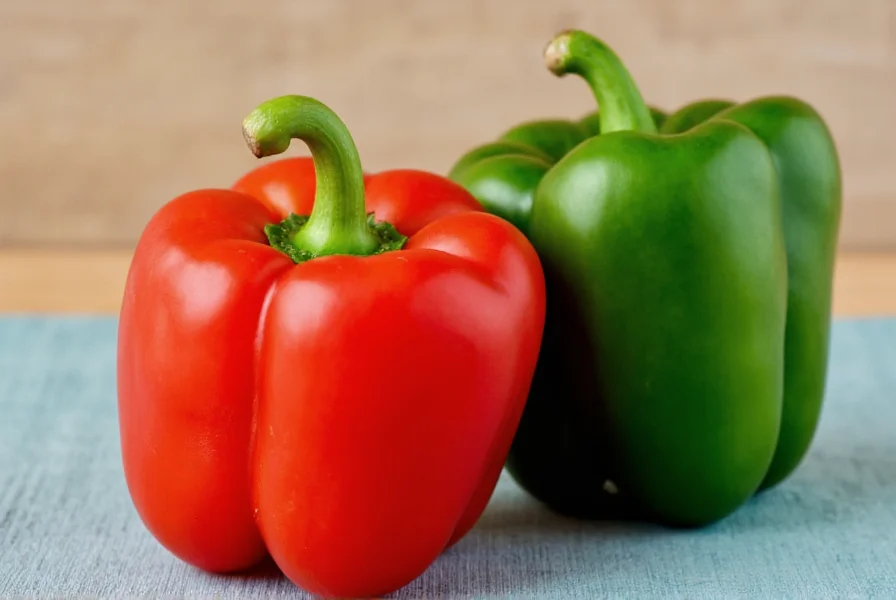When exploring the question is pepper a veg, we need to examine both botanical science and culinary tradition. The straightforward answer is no—peppers aren't vegetables from a botanical perspective. However, in cooking and nutrition contexts, they're almost always treated as vegetables. This distinction creates understandable confusion for home cooks, students, and gardening enthusiasts alike.
The Botanical Reality: Peppers Are Fruits
From a scientific standpoint, peppers—including bell peppers, chili peppers, and jalapeños—are classified as fruits. Botanists define fruits as the mature ovary of a flowering plant, typically containing seeds. Since peppers develop from the flower of the Capsicum plant and house numerous seeds within their chambers, they meet the botanical criteria for fruits.
This classification places peppers in the same category as tomatoes, cucumbers, and eggplants—all commonly mistaken for vegetables. The confusion arises because our culinary traditions don't always align with scientific definitions. Understanding why are peppers considered vegetables requires examining how we use them in cooking rather than their biological origins.

Culinary Classification: Why Peppers Function as Vegetables
In the kitchen, ingredients are categorized by flavor profile and usage rather than botanical accuracy. Chefs and home cooks treat peppers as vegetables because:
- They're typically used in savory dishes rather than sweet preparations
- They lack the pronounced sweetness associated with most fruits
- They're harvested and prepared similarly to other vegetables
- Nutritionally, they're grouped with vegetables in dietary guidelines
The USDA and other nutritional organizations classify peppers as vegetables for dietary purposes. When someone asks is bell pepper a vegetable or fruit, the practical answer for meal planning and nutrition is 'vegetable'—even if botanists would disagree.
Historical Context of the Pepper Classification
The confusion between botanical and culinary classifications isn't new. In 1893, the U.S. Supreme Court case Nix v. Hedden famously ruled that tomatoes should be considered vegetables for tariff purposes, despite their botanical classification as fruits. This legal precedent reflects how deeply ingrained the culinary definition has become in everyday language.
Similarly, when exploring is chili pepper a fruit, we find the same pattern—botanically yes, culinarily no. This dual identity affects how we shop for, prepare, and understand these versatile ingredients.
Pepper Varieties and Their Classifications
All peppers belong to the Solanaceae family and share the same botanical classification. The table below shows common pepper varieties and how they're treated across different contexts:
| Pepper Type | Botanical Classification | Culinary Classification | Nutritional Grouping |
|---|---|---|---|
| Bell peppers | Fruit | Vegetable | Non-starchy vegetable |
| Jalapeños | Fruit | Vegetable | Non-starchy vegetable |
| Habaneros | Fruit | Vegetable | Non-starchy vegetable |
| Black pepper | Spice (from dried fruit) | Seasoning | Condiment |
Note that black pepper (from Piper nigrum) is a different plant entirely and comes from dried berries, making it a spice rather than what we typically call "peppers" in culinary contexts.
Nutritional Implications of Pepper Classification
Understanding pepper plant classification matters for nutrition. As botanically classified fruits that function as vegetables culinarily, peppers offer a unique nutritional profile:
- Exceptionally high in vitamin C (one bell pepper contains more than 100% of daily requirement)
- Rich in antioxidants like carotenoids and capsaicin (in hot varieties)
- Low in calories and carbohydrates
- Excellent source of vitamin A and potassium
This nutritional profile aligns more closely with vegetables than with typical sweet fruits, further justifying their culinary treatment as vegetables despite their botanical classification.

Practical Takeaways for Cooks and Gardeners
Whether you're planning meals or growing your own produce, understanding the difference between fruit and vegetable classifications helps set proper expectations:
- Gardeners should treat pepper plants like fruiting plants, providing appropriate support and harvesting when fully colored
- Cooks can use peppers in both savory and sweet applications, though their mild flavor profile works best in savory dishes
- When following recipes, recognize that "vegetable" refers to culinary usage, not botanical accuracy
- Nutritionally, peppers provide vegetable-like benefits regardless of their technical classification
The next time someone asks is pepper a veg, you can confidently explain this fascinating intersection of science and culinary tradition. The answer isn't as simple as yes or no—it's a perfect example of how language and science sometimes take different paths to describe the same reality.











 浙公网安备
33010002000092号
浙公网安备
33010002000092号 浙B2-20120091-4
浙B2-20120091-4